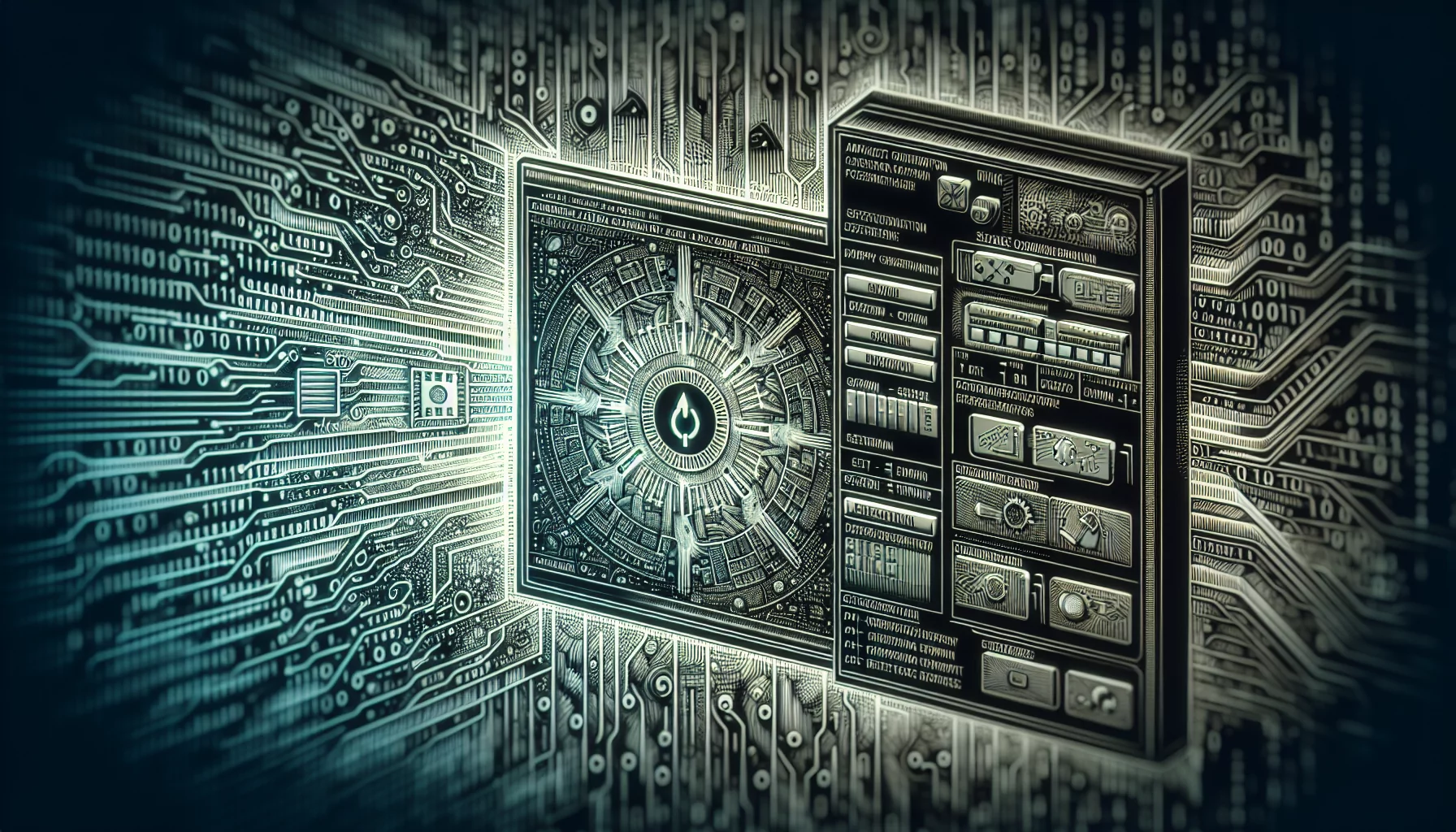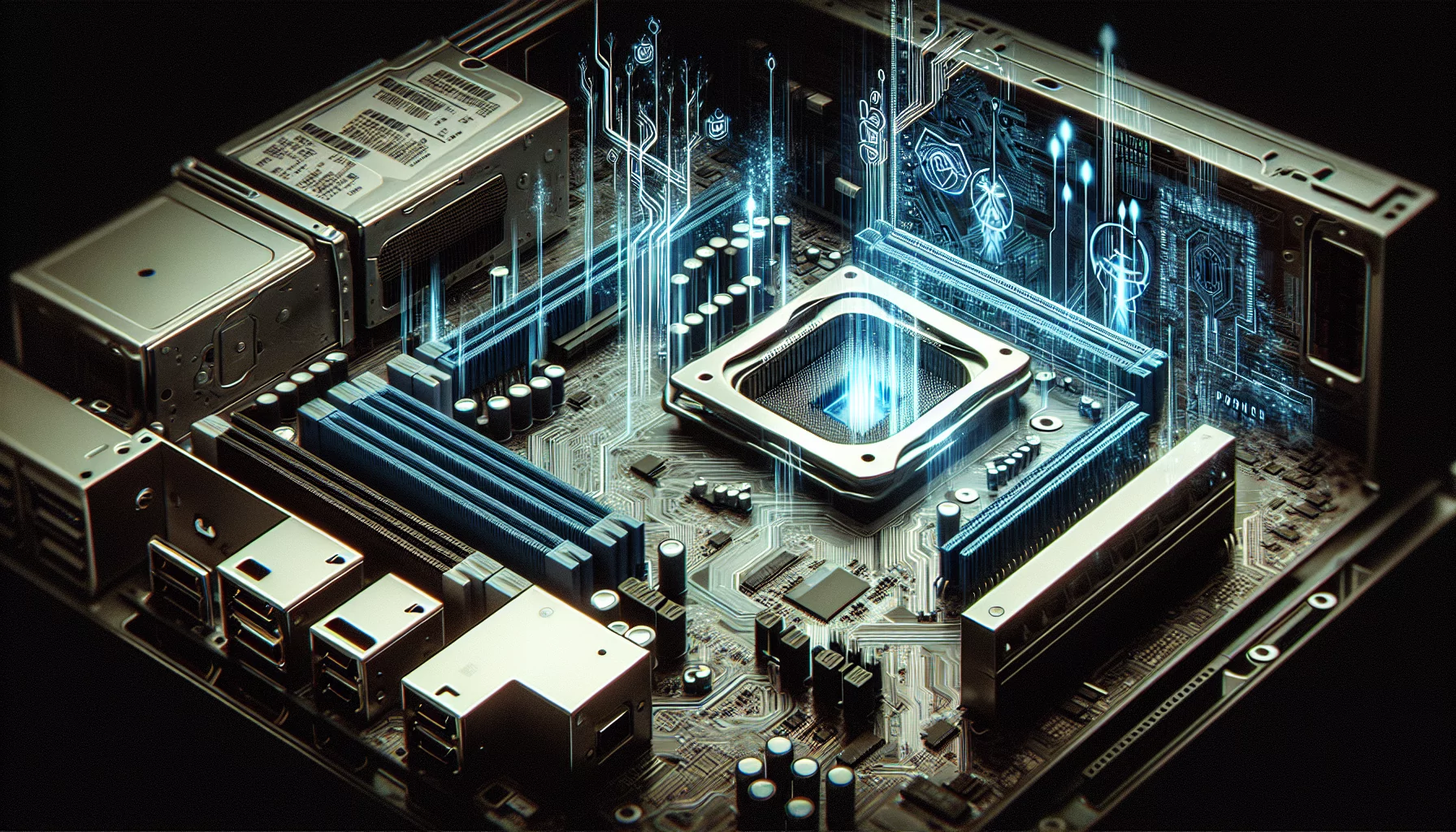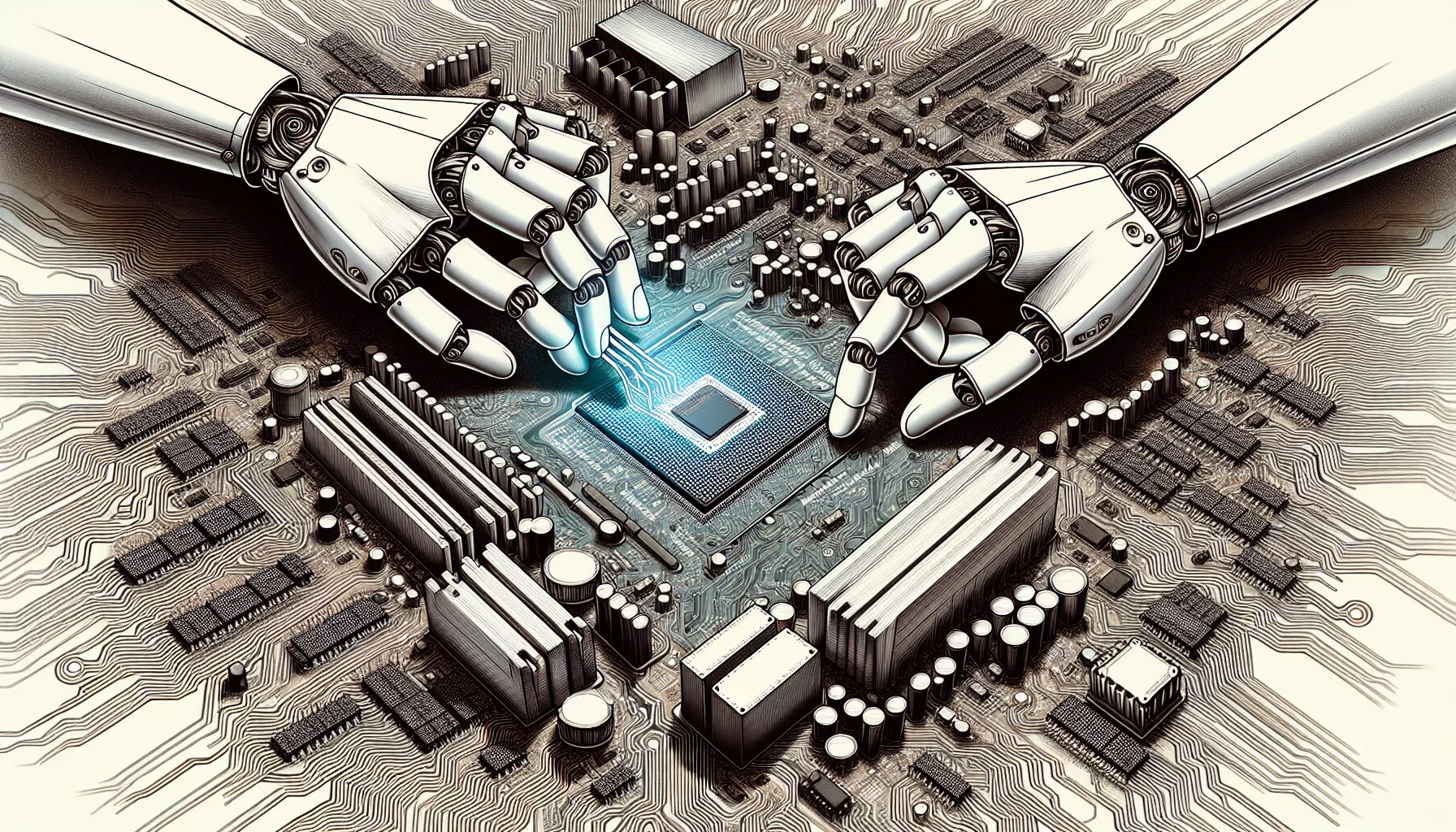ACPI BIOS errors, specifically the “acpi bios error” and “ACPI BIOS Error Dell” cause system crashes and Blue Screen of Death (BSOD). These errors often originate from issues related to a computer’s BIOS. This guide helps you understand the error, find its causes, and fix it step-by-step.
Key Takeaways
ACPI BIOS errors often result from outdated or corrupted BIOS firmware and device drivers, leading to system instability and frequent crashes.
Key fixes for ACPI BIOS errors include updating the BIOS and system drivers, adjusting BIOS settings, and advanced solutions such as reflashing the BIOS or performing a hard reset.
Preventative measures like regular BIOS and driver updates, avoiding hardware changes during hibernation, and maintaining system health can help avert future ACPI BIOS errors.
Introduction
Encountering an ACPI BIOS error can be more than a minor inconvenience—it can disrupt your workflow, cause data loss, and test your patience. These errors stem from the depths of your computer’s BIOS, a fundamental layer of software that controls the most basic operations of your machine. When ACPI settings go awry, you’re left with a system that’s about as stable as a house of cards in a windstorm, frequently collapsing into a Blue Screen of Death (BSOD).
This is not a plight you must endure silently, for this article is your arsenal against such chaos. The focus here is to demystify these errors, provide a treasure trove of solutions, and arm you with preventative measures to keep these unwelcome interruptions at bay. From the basic steps to the more advanced tactics, you’ll gain the insights needed to confront and conquer these errors, ensuring your computer marches on with unwavering stability.
So, take a deep breath and prepare to turn the tide against the dreaded ACPI BIOS error.
Understanding the ACPI BIOS Error

To defeat an enemy, one must first understand it. The ACPI BIOS error is an unwelcome gatecrasher that turns your computer’s screen blue and forces a reboot, snatching away any chance of troubleshooting. This error is the result of problems with the ACPI settings in your computer’s BIOS, a critical component that manages power consumption and plays a pivotal role in your system’s stability.
When the BIOS and the operating system don’t see eye to eye on ACPI configurations, it’s like a symphony without a conductor—chaos ensues, and the system crashes. Grasping the root of this error code is the key to unlocking the door to a resolution. As we delve deeper into the causes and solutions, keep in mind that each error message and code is a clue in solving this puzzle.
Common Causes of ACPI BIOS Errors
The sources of ACPI BIOS errors are as varied as the symptoms they produce. At the core, outdated or corrupted BIOS firmware often takes the blame, acting like expired medicine that does more harm than good.
Then there are the device drivers, the unsung heroes of hardware communication, which, if damaged or outdated, can lead to miscommunication and, ultimately, to the dreaded ACPI error.
But the plot thickens. Improperly configured system drivers, hardware conflicts, and even the seemingly innocent act of adding RAM during your computer’s hibernation can all conspire to bring about an ACPI BIOS error.
It’s a tale of misalignment and miscommunication, where the BIOS is unable to properly converse with other components due to corrupt files or outdated software, especially during pivotal moments like installing a new operating system or waking from a deep hibernation. Understanding these causes is the compass that will guide you to the right solutions.
Real World: ACPI BIOS Error DELL BLUE SCREEN
Let’s take a moment to step out of the theoretical and into the tangible world where these errors wreak havoc. Consider the case of a major manufacturer, Dell, which inadvertently distributed a defective BIOS update. This update caused persistent errors, creating a whirlwind of frustration for users who found themselves caught in a loop of unsuccessful fixes.
However, even in the face of such adversity, a solution emerged. If you’re grappling with this specific issue, here’s a strategy that could lead to victory: navigate to Dell’s support site, verify your model, and download the correct BIOS version—1.16 in this instance. But before you proceed, ensure you disable Windows Update and remove Dell’s Support Assistant to prevent the system from helpfully (but unhelpfully) reloading the problematic update. With these precautions in place, run the BIOS update file and watch as the error dissipates into the ether.
How to Fix ACPI BIOS Errors in Windows

With the causes and real-world impact fresh in our minds, let’s roll up our sleeves and tackle the remedies. There are several avenues to explore when fixing ACPI BIOS errors in Windows: updating the BIOS, updating system drivers, and adjusting BIOS settings, such as disabling AHCI. These steps range from simple to complex and can often restore the harmony between your operating system and the ACPI BIOS.
Update Your BIOS
The first checkpoint on our troubleshooting journey is the BIOS update. This process can be likened to updating your passport before an international trip—it’s essential to ensure a smooth journey ahead. Begin by identifying your motherboard model using the Command Prompt, then arm yourself with the latest BIOS version from the manufacturer’s website.
Next, prepare a USB drive, formatted to the FAT32 file system, as your vessel for the update. With the BIOS file onboard, dive into the BIOS setup by pressing the designated key during boot-up, and navigate the menu to find the update option. Proceed with caution and patience, as interrupting this process could turn your motherboard into an expensive paperweight.
Update System Drivers
If BIOS is the brain of your computer, then drivers are the nervous system, transmitting vital signals to each component. Keeping these drivers up-to-date is crucial in preventing ACPI BIOS errors. The Device Manager in Windows is your ally here, allowing you to scout for outdated drivers and update them with a few clicks.
Venture into the Device Manager, right-click on each suspect driver, and select the option to update. This proactive step ensures that your hardware sings in perfect harmony with the operating system, reducing the chances of a system crash and the associated blue screen nightmares caused by outdated or corrupt drivers.
Disable AHCI in BIOS Settings
Now, let’s delve into a setting within the BIOS that might be the source of your woes: AHCI mode. Disabling this mode has been known to banish ACPI BIOS errors for some users. To do this, you can also check if your system is running in the correct ACPI mode. Follow these steps:
Enter the BIOS setup.
Locate the ‘SATA Configuration’ menu.
Switch the SATA mode from AHCI to IDE or Legacy, like changing the channel on a television that’s stuck on static.
After this adjustment, follow these steps:
Save your changes and exit the BIOS.
Your computer will reboot with its new settings.
If the stars align, you’ll be greeted with a system that’s free from the clutches of ACPI BIOS errors.
Advanced Solutions for Persistent ACPI BIOS Errors

Should the standard fixes fail to quell the ACPI BIOS errors, fear not. There are more potent remedies in the arsenal: reflashing the BIOS, performing a hard reset, and employing Windows Startup Repair. These are the advanced tactics, reserved for the most stubborn of errors, and they require a steady hand and a bit of technical know-how.
Reflash BIOS
Reflashing the BIOS is akin to giving your computer a fresh start, wiping the slate clean of any corrupted or outdated firmware.
Begin by downloading the latest BIOS firmware from the manufacturer’s website, ensuring compatibility with your motherboard. Next, prepare your USB steed, transfer the BIOS update, and embark on the reflash journey via the BIOS setup utility or a flashing tool provided by your motherboard’s creator.
This procedure is delicate, and it’s imperative to follow the manufacturer’s specific instructions to the letter. A successful reflash will rejuvenate your system’s BIOS, potentially freeing you from the grip of persistent ACPI BIOS errors.
Perform a Hard Reset
In the realm of advanced solutions, the hard reset emerges as a surprisingly simple yet effective maneuver. This process entails turning off your device, unplugging all power sources, and pressing the power button for a good 15 to 30 seconds to discharge any lingering power.
Reconnect all the cables and power on your device. This act of electrical rejuvenation can sometimes realign the stars, clearing any hardware misconfigurations that might have been contributing to the ACPI BIOS errors.
Utilize Windows Startup Repair
On the software side of advanced solutions lies Windows Startup Repair, a tool designed to mend the broken bones of your operating system. This utility can be summoned by booting from a Windows installation disk or USB and navigating to the ‘Repair your computer’ option. Its magic lies in its ability to diagnose and repair startup files, which may be at the heart of your ACPI woes.
With a healthy dose of patience, allow the tool to work its magic. If successful, Windows Startup Repair will have patched up the cracks in your system’s startup files, potentially resolving those persistent ACPI BIOS errors.
Preventing Future ACPI BIOS Errors
As the saying goes, an ounce of prevention is worth a pound of cure. To safeguard your system from future ACPI BIOS errors, consider a regular maintenance routine. This includes keeping your BIOS and system drivers up to date, refraining from hardware tinkering during hibernation, and steering clear of overclocking temptations.
Additionally, fortify your defenses with regular malware scans and a tidy Windows Registry. Remember, the harmony between your operating system and BIOS is fragile, and even small discrepancies can lead to significant errors.
Ensuring your operating system correctly communicates with the BIOS is crucial. Vigilance is your best defense against these digital gremlins, especially when windows occurs in the context of operating system issues.
When to Seek Professional Help
Despite your best efforts, some ACPI BIOS errors are like a Hydra—cut off one head, and two more appear. When faced with persistent error messages, complex hardware issues, or memory problems that elude your grasp, it’s time to call in the cavalry: professional help.
Tech support can offer a specialized touch, particularly if your system is still under warranty. They can navigate the labyrinthine ACPI tables and diagnose issues that might be beyond the scope of typical troubleshooting steps. Don’t let pride be your downfall; sometimes, the wisest move is to seek the expertise of those who wield the tools and knowledge to fix what we cannot.
Summary
As we wrap up our journey through the tempestuous seas of ACPI BIOS errors, let’s anchor ourselves with the knowledge we’ve gained. From understanding the nature of these errors and their common causes, to implementing fixes ranging from the simple to the complex, we’ve equipped ourselves with the tools needed to navigate these technical challenges.
With regular updates and preventive measures, we can keep our systems running smoothly and avoid the frustration of unexpected crashes. Remember, when in doubt, professional help is always a resource worth considering. Embrace these insights, and let them guide you towards a future of computing stability and peace of mind.
Frequently Asked Questions
What exactly is an ACPI BIOS error?
A computer’s BIOS can encounter an ACPI BIOS error, which is a problem within the BIOS settings related to power management, leading to system instability and frequent Blue Screen of Death (BSOD) incidents.
How can I tell if my BIOS needs to be updated to fix an ACPI BIOS error?
You can tell if your BIOS needs to be updated to fix an ACPI BIOS error by visiting your motherboard manufacturer’s website and comparing the latest BIOS version with what’s currently installed on your computer. If the website shows a newer version, updating your BIOS might resolve the ACPI BIOS error.
Is it risky to reflash my BIOS?
Yes, it is risky to reflash your BIOS due to the potential for system damage if the update process is interrupted or done incorrectly. Always follow the manufacturer’s instructions and use a reliable power source.
What should I do if updating drivers and BIOS settings doesn’t fix the ACPI BIOS error?
If updating drivers and BIOS settings doesn’t fix the ACPI BIOS error, consider advanced solutions like reflashing the BIOS or performing a hard reset. If the issue persists, seek professional help.
Can ACPI BIOS errors be prevented?
Regularly updating your BIOS and system drivers, avoiding hardware modifications during hibernation, and maintaining system health can help reduce the likelihood of ACPI BIOS errors. However, not all errors can be prevented.


